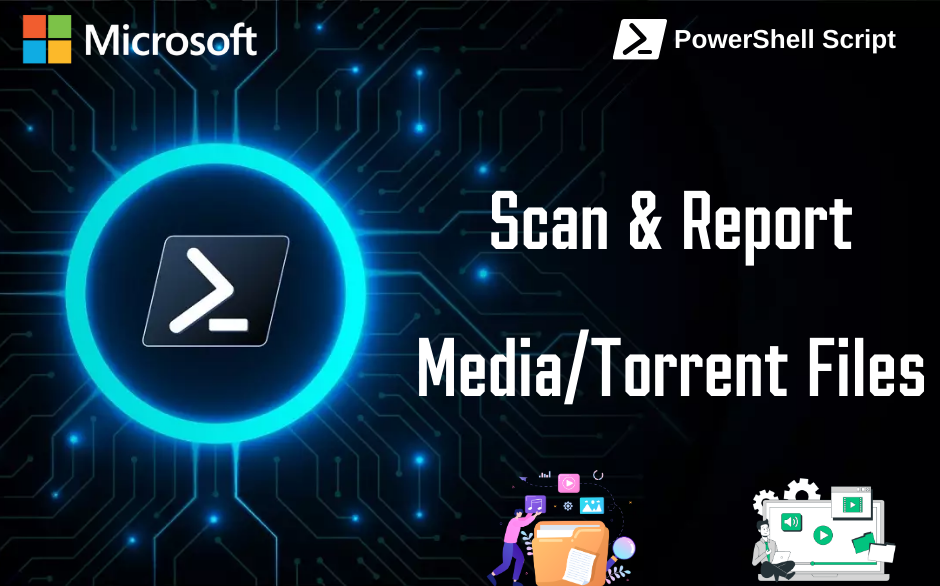PowerShell to export the DNS details from DHCP Scope
- Avijit Dutta

- Jul 11, 2019
- 1 min read
Updated: Sep 21, 2022
Article No :: KB00001
Dear All - Below PS Script will fetch the DNS information configured in Scope options or Server Options and send the details over mail. It will fetch max 3 DNS configured in the Scope or server option.
Note: Please test the script in the test environment, before executing in the production environment. I have downloaded the script from the internet and modified the same as per my need and environment.
##########################################################################
# Name: Avijit Dutta
# ScriptName : Get-DHCPScopeOption-DNS
# Purpose : This script will fetch the DNS configured in the Scope Option or Server Option.#
# Creation Date : 01-01-2016 #
# Note: Taken a reference from Microsoft Script Center and modified as per our enviroment #
############################################################################################
############################################################################################
# Prerequsites #
# 1) Create below folder hierarchy #
# DHCP_DNS_Info #
# 01_Report #
# 02_BackupLocation #
# 03_03_ZIP_Report #
# 2) SMTP Server #
# 3) Recipient email address. #
############################################################################################
Import-Module DHCPServer
# Get all Authorized DCs from AD configuration with below command. But, I have mentioned them manually.
# $DHCPs = Get-DhcpServerInDC
# Manually, mentioned the DHCP Server list
$DHCPs = 'Server1','Server2','Server3','Server4'
# Path and Filename of the Exported data
$Filename = "E:\Script\DHCP_DNS_Info\01_Report\DHCPScopes_DNS_$(get-date -Uformat "%Y%m%d-%H%M%S").csv"
$Report = @()
$k = $null
Write-Host -foregroundcolor Green "`n`n`n`n`n`n`n`n`n"
foreach ($dhcp in $DHCPs) {
$k++
Write-Progress -activity "Getting DHCP scopes:" -status "Percent Done: " `
-PercentComplete (($k / $DHCPs.Count) * 100) -CurrentOperation "Now processing $($dhcp)"
$scopes = $null
$scopes = (Get-DhcpServerv4Scope -ComputerName $dhcp -ErrorAction:SilentlyContinue)
If ($scopes -ne $null) {
#getting global DNS settings, in case scopes are configured to inherit these settings
$GlobalDNSList = $null
$GlobalDNSList = (Get-DhcpServerv4OptionValue -OptionId 6 -ComputerName $dhcp -ErrorAction:SilentlyContinue).Value
$scopes | % {
$row = "" | select Hostname,ScopeID,SubnetMask,Name,State,StartRange,EndRange,LeaseDuration,Description,DNS1,DNS2,DNS3,GDNS1,GDNS2,GDNS3
$row.Hostname = $dhcp
$row.ScopeID = $_.ScopeID
$row.SubnetMask = $_.SubnetMask
$row.Name = $_.Name
$row.State = $_.State
$row.StartRange = $_.StartRange
$row.EndRange = $_.EndRange
$row.LeaseDuration = $_.LeaseDuration
$row.Description = $_.Description
$ScopeDNSList = $null
$ScopeDNSList = (Get-DhcpServerv4OptionValue -OptionId 6 -ScopeID $_.ScopeId -ComputerName $dhcp -ErrorAction:SilentlyContinue).Value
#write-host "Q: Use global scopes?: A: $(($ScopeDNSList -eq $null) -and ($GlobalDNSList -ne $null))"
If (($ScopeDNSList -eq $null) -and ($GlobalDNSList -ne $null)) {
$row.GDNS1 = $GlobalDNSList[0]
$row.GDNS2 = $GlobalDNSList[1]
$row.GDNS3 = $GlobalDNSList[2]
$row.DNS1 = $GlobalDNSList[0]
$row.DNS2 = $GlobalDNSList[1]
$row.DNS3 = $GlobalDNSList[2]
}
Else {
$row.DNS1 = $ScopeDNSList[0]
$row.DNS2 = $ScopeDNSList[1]
$row.DNS3 = $ScopeDNSList[2]
}
$Report += $row
}
}
Else {
write-host -foregroundcolor Yellow """$($dhcp)"" is either running Windows 2003, or is somehow not responding to querries. Adding to report as blank"
$row = "" | select Hostname,ScopeID,SubnetMask,Name,State,StartRange,EndRange,LeaseDuration,Description,DNS1,DNS2,DNS3,GDNS1,GDNS2,GDNS3
$row.Hostname = $dhcp
$Report += $row
}
write-host -foregroundcolor Green "Done Processing ""$($dhcp)"""
}
$Report | Export-csv -NoTypeInformation -UseCulture $filename
##################################################################
# Now, We will zip the export file and send the same over email. #
##################################################################
#Below command will copy the file from 01_Report folder to Backup Location.
Copy-Item -Path $OutputFile -Destination "E:\Script\DHCP_DNS_Info\02_BackupLocation"
## Below Code is to ZIP the folder ##
$ZIPSource = "E:\Script\DHCP_DNS_Info\02_BackupLocation"
$ZIPDestination = "E:\Script\DHCP_DNS_Info\03_ZIP_Report\DHCP_Stat_$(get-date -f yyyy-MM-dd-HHmm).zip"
If(Test-path $ZIPDestination) {Remove-item $ZIPDestination}
Add-Type -assembly "system.io.compression.filesystem"
[io.compression.zipfile]::CreateFromDirectory($ZIPSource, $ZIPDestination)
##################################
# SMTP Settings for Email Report #
##################################
# "From" email address
$EmailFrom = "Report@abc.com"
# "To" email address
$EmailTo1 = "TOrecipient1@abc.com"
$EmailTo2 = "TOrecipient2@abc.com"
#$EmailTo3 = "TOrecipient3@abc.com"
#$EmailTo4 = "TOrecipient4@abc.com"
#$EmailTo5 = "TOrecipient5@abc.com"
# "CC" email address
$EmailCC = "CCrecipient1@abc.com"
# Subject of the email
$EmailSubject = "DHCP Scope Information :: Dated :: $(get-date -f yyyy-MM-dd)"
# Body of the email
$EmailBody = @"
<html>
<body style="font-family: Arial; font-size: 11pt;">
Dear All,<br></br>
Please find attached DHCP Scope information - Dated :: $(get-date -f yyyy-MM-dd).<br></br>
<br></br>
Regards,<br>
Server Admin</br>
</body>
</html>
<br></br>
"@
$attachment = $ZIPDestination
$SMTPServer = "smtp.exchangeserver.com"
$SMTPPort = "25"
$Message = New-Object System.Net.Mail.MailMessage
$Message.From = $EmailFrom
$Message.To.Add($EmailTo1)
$Message.To.Add($EmailTo2)
#$Message.To.Add($EmailTo3)
#$Message.To.Add($EmailTo4)
#$Message.To.Add($EmailTo5)
#$Message.CC.Add($EmailCC)
$Message.Body = $EmailBody
$message.Subject = $EmailSubject
$attach = new-object Net.Mail.Attachment($attachment)
$message.Attachments.Add($attach)
$message.IsBodyHTML = $true
$SMTPClient = New-Object Net.Mail.SmtpClient($SmtpServer, $SMTPPort)
$SMTPClient.Send($Message)
$Message.dispose()
# Below command with delete the extra file from Backup Location.
Get-ChildItem “E:\Script\DHCP_DNS_Info\02_BackupLocation” -recurse -include *.htm -force | remove-itemIf you liked this article, do share the same. You can also Buy me a Coffee using Paypal at "paypal.me/duttaavijit", This is purely a volunteer effort. THANK YOU !!!







Comments